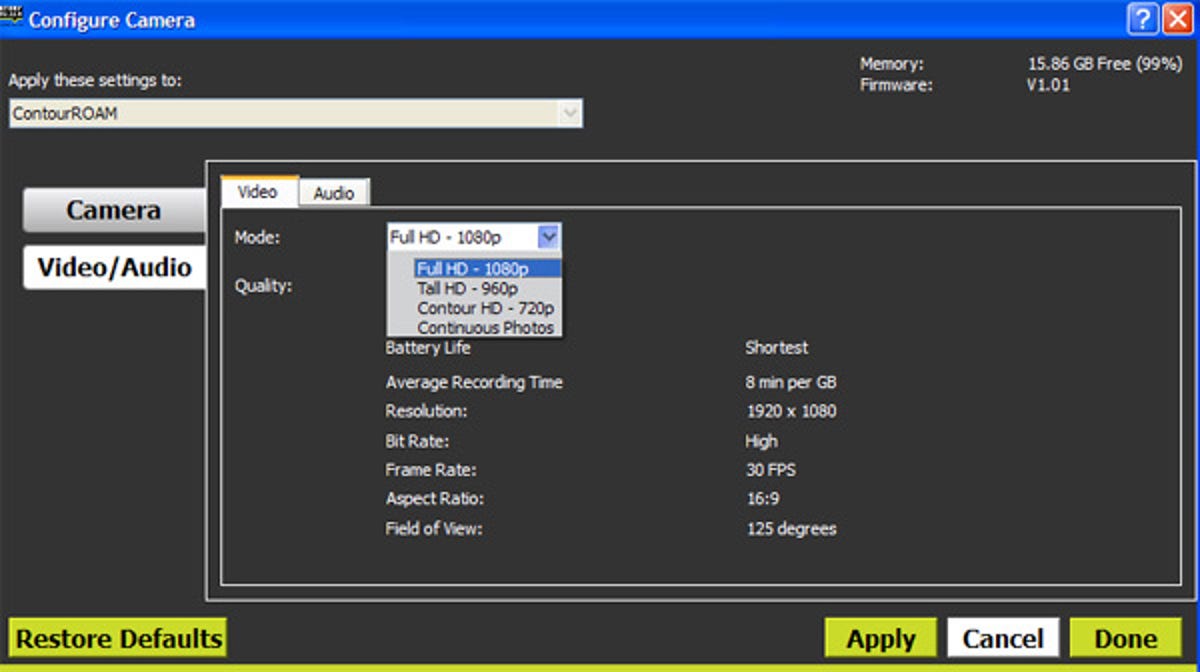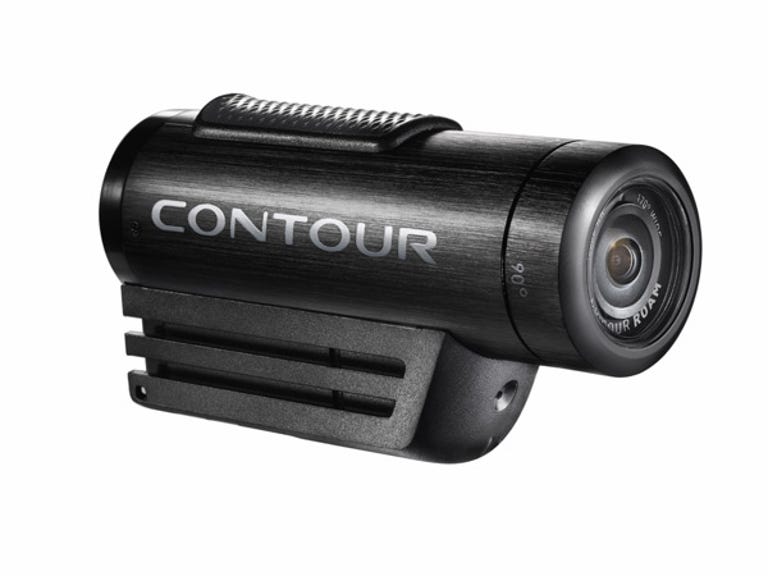 Why You Can Trust CNET
Why You Can Trust CNET Contour Roam review: Contour Roam
The Contour Roam will suit action adventurers who just want to point and shoot. Adjusting settings on the fly is next to impossible, so if tweaking's your deal, look elsewhere.
Contour is a relatively new player in the Australian market, emerging with the Editors' Choice-winning Contour+ earlier this year. That portable sports camera packed every feature you could imagine into a small unit, apart from waterproof capabilities.
The Good
The Bad
The Bottom Line
Design and features
The Roam sits alongside the Contour+ at the top end of the scale and the Contour GPS, adding waterproofing to 1 metre for up to 30 minutes. An optional waterproof case increases this depth to 60 metres. It's shaped like a little pistol, with the connection options hiding behind a sliding panel at the back. Featuring a metal construction, the Roam feels well made, and like it could withstand some harsh treatment.
Recording with the Roam is very easy, with the switch at the top of the camera that automatically starts taking video. The Roam's lens can be rotated 270 degrees, which is ideal for anyone who wants to mount it in a peculiar position. On the topic of mounts, out of the box you are provided with a rotating flat surface mount with adhesive backing and a flat surface mount with backing.
There is a single physical button on the back panel, which turns the laser guide on or off. This is used to work out the orientation of the lens when it's turned, although the pointer is not very strong at all, and is hard to see against a surface in bright outdoor situations.
Do be warned that the Roam doesn't come with full HD switched on as standard (720p is default). As there is no screen on the device, all of the settings need to be changed by plugging it into a computer and downloading the free Storyteller software. While we're not fans of having a range of unnecessary software bundled in the box with the camera, it would be much more intuitive to have the software stored on the camera itself, launching automatically when it is plugged in. It's also worth noting that you can't switch between shooting stills and video on the fly — it's back to home base computer for that.

From the Storyteller software, you can control white balance, video quality settings, metering, contrast and exposure. Still images are captured as JPEGs in intervals ranging from 3 to 60 seconds.
(Screenshot by CBSi)
The Roam recharges via the mini-USB adapter at the back of the device. It takes microSD cards, though you will need to supply your own, as Contour does not supply one out of the box.
Video quality
Given that the primary use for a camcorder such as the Roam is to strap it onto fast-moving objects or splash about within the ocean, expectations around image quality aren't going to be that high. Video quality is decent, with the Roam doing best in situations where there's a lot of light. Low light is not so good, with a decent amount of grain appearing over the frame. Audio is also hit and miss on default settings, with the Roam refusing to pick up certain nuances and voices, although the levels can be changed in the software package.
Colour rendition is also hit and miss, with the Roam choosing to under- rather than overexpose the frame, making darker areas washed out and colours appear on the gloomy side when there's restricted light.
The Roam's lens is a very wide 170 degrees, which produces an instantly recognisable field of view comparable to that used in skating videos. This also means that while it captures a huge portion of the scene in front of you, it also displays very noticeable distortion. Below is a comparison between video quality when left on default settings (720p, top) and full HD (1080p, bottom).
Conclusion
The Contour Roam will suit action adventurers who just want to point and shoot. Adjusting settings on the fly is next to impossible, so if tweaking's your deal, look elsewhere. The Roam is available for AU$299.


